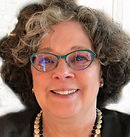

Dr. Sandra I Kay
ElegantProblem.com
On Elegant Problems
Chapter 7 from Creating Meaning Through Art
Reference: Kay, S.I. (1998). The choice to shape problems for visual thinking. In J. Simpson, J. M. Delaney, M. S. Kerlavage, K. L. Carroll, J. L. Olson, S. Kay, & C.M. Hamilton: Creating meaning in art: Teacher as choicemaker, New Jersey: Prentice Hall.
ACA Creativity Book 2013
Reference: Kay, S. I. (2013). Designing Elegant Problems for Creative Thinking, In F. Reisman (Ed.) Creativity: Process, Product, Personality, Environment & Technology, pp. 28 -36, KIE Conference Book Series, 2013 International Conference on Knowledge, Innovation & Enterprise, Cambridge, England
Serious Play and The Role of Paradox in Elegant Problems
Reference: Kay, S. I. (2016) Serious Play with Elegant Problems, p. 112-115 invited contribution to Singapore Teachers’ Academy for the aRts Serious Play: Perspectives on Art Education, Ministry of Education, 2 Malan Road, Singapore, 109433
On Talent & Expertise
Talent Beyond Words: Unveiling Spatial, Expressive, Kinesthetic, and Musical Talent in Young Children
Reference: Kay, S., & Subotnik, R. F. (1994). Talent Beyond Words: Unveiling spatial, expressive, kinesthetic, and musical talent in young children. Gifted Child Quarterly, 38(2), 70-74.
ABSTRACT: Talent Beyond Words was developed to identify and serve children with potential talent in the performing
arts, especially dance and percussion music. Participants in the program included elementary-aged students attending two inner city schools. All pupils at targeted grade levels received instruction over several weeks in order to provide rich opportunities for dynamic assessment by teams of professional artists, arts educators, and specially trained teachers from participating sites. Students identified as a result of the audition processes took part in demanding after school curricula over the course of 3 years. The students’ proficiency levels in their respective performing arts were impressive, as was the esteem they gained from teachers, classmates, parents, and from their own disciplined efforts.
The Figural Problem Solving and Problem Finding of Professional and Semiprofessional Artists and Non-artists
Reference: Kay, S. (1991). The figural problem solving and problem finding of professional and semiprofessional and nonartists. Creativity Research Journal, 4(3), p.233-252.
ABSTRACT: The processes of finding a solution to a stated problem and those employed in formulating a problem prior to determining a solution strategy are implied by the behaviors observed in the manipulation of fig-` symbol systems. Sixty adult participants agreed to be videotaped while given two measures of spatial visualization, a figural problem-solving activity, and two games which required defining a problem prior to producing a result. When groups, defined by their experience in producing ideas in art, were com-pared, traditional quantitative measures of performance yielded few significant differences. However, multivariate analyses of the observed qualitative variables resulted in significant differences. Theoretical and educational implications are discussed.
On the Nature of Expertise in Visual Art
Reference: Kay, S. I. (2000). On the nature of expertise in visual art. In R. Freeman & B. Shore (Eds.), Talents unfolding Cognition and development: Selected proceedings of 1992 Esther Katz Rosen Symposium, pp. 217-232. Washington, DC: APA.
Abstract: A study of the qualitative and qualitative differences among artists, semi-professional artists and self-defined non-artists.
Gifted Education in the Twenty-First Century
Reference: Kay, S. I. (1999). The Talent Profile as a curricular tool for academics, the arts, and athletics. In Gifted Education in the 21st Century: Issues and concerns, p.47-60. N.Y., N.Y.: Winslow Press.
Cognitive Theory- An Element of Design for Arts Education
Reference: Kay, S. (1990). Cognitive theory--An element of design for art education. Design for Arts Education, 92(2), 10-20. (Reston Prize recipient)